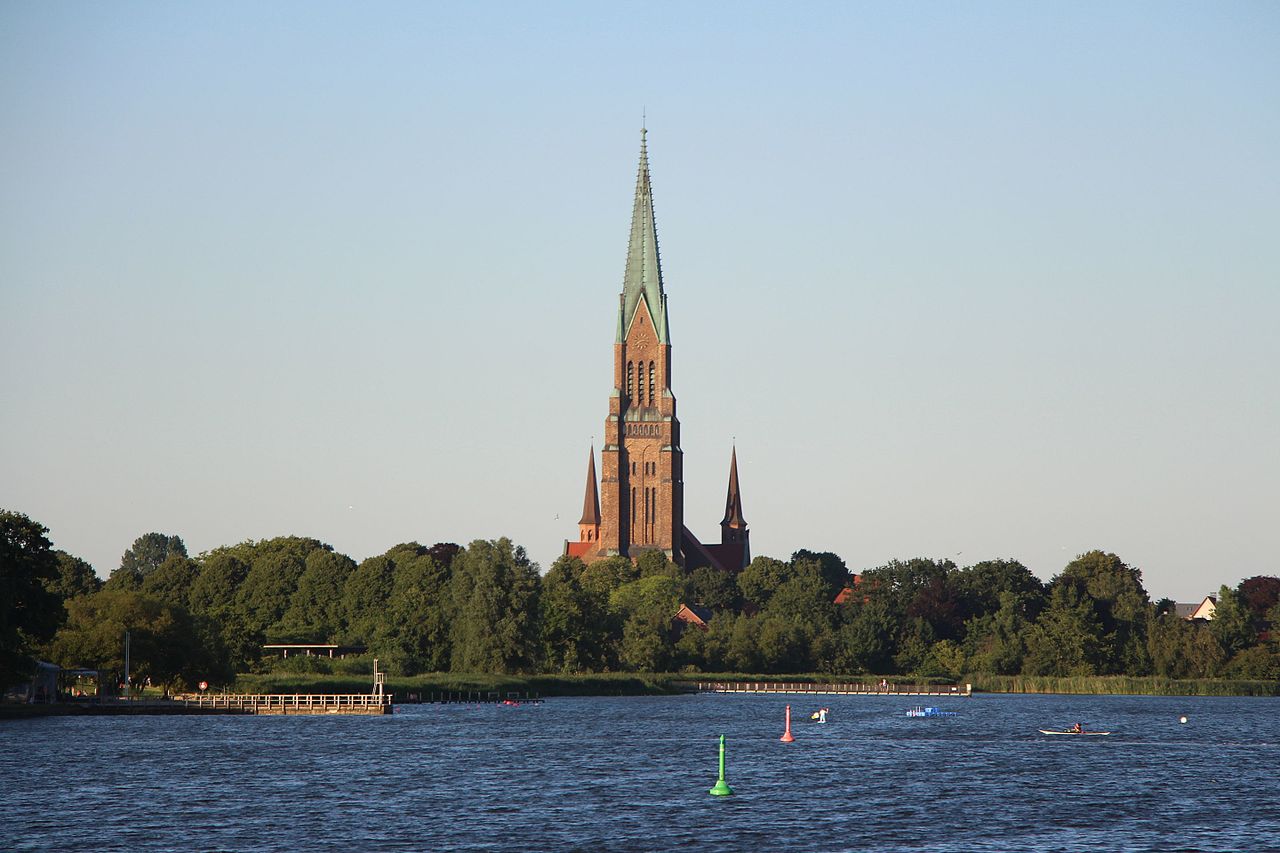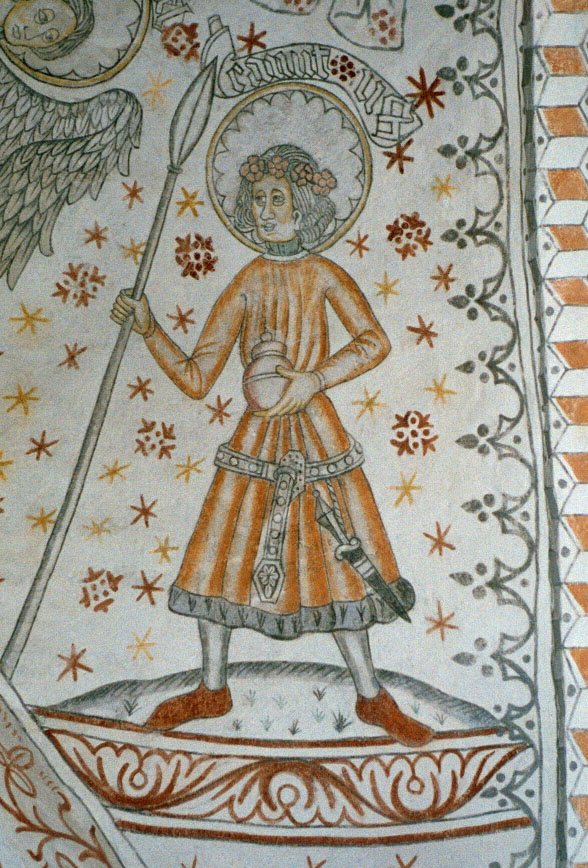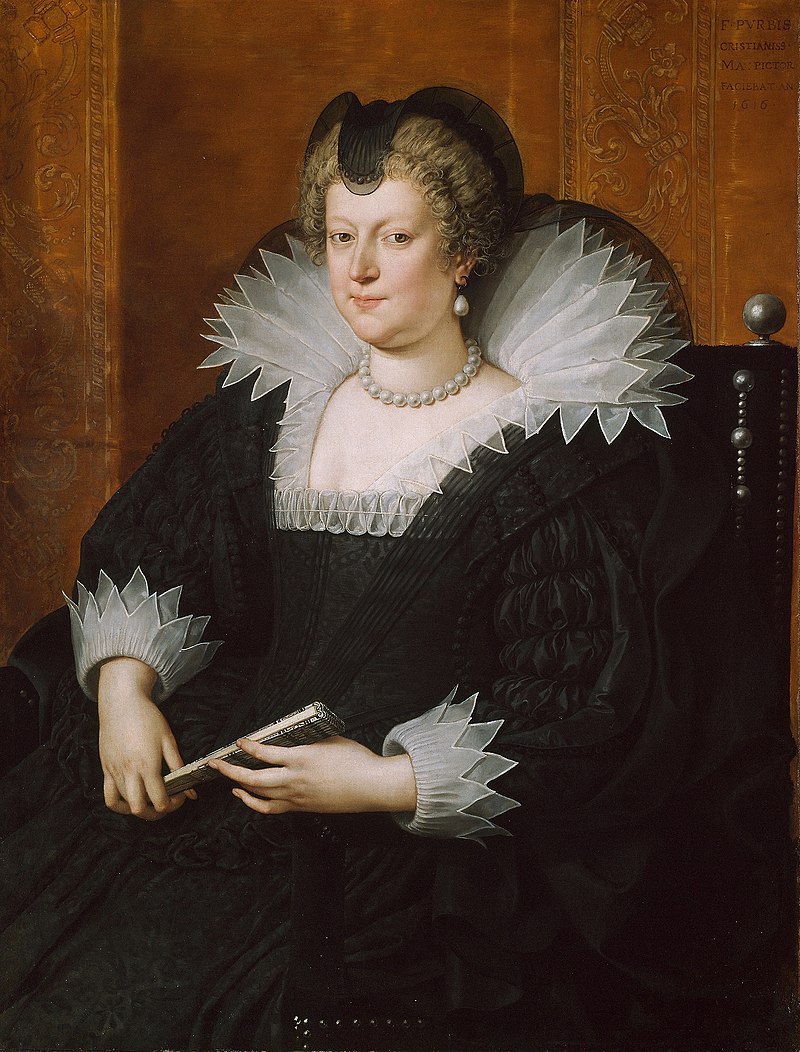© Unofficial Royalty 2025

Maria Christina of the Two Sicilies, Queen of Spain; Credit – Wikipedia
April 27, 1650 – Birth of Charlotte Amalie of Hesse-Kassel, Queen of Denmark and Norway, wife of King Christian V of Denmark and Norway, in Kassel, Landgraviate of Hesse-Kassel, now in Hesse, Germany
In 1667, Charlotte Amalie married the future King Christian V of Denmark and Norway, and they had seven children. Charlotte Amalie’s husband succeeded his father in 1670 as Christian V, King of Denmark and Norway. During King Christian V’s reign, colonies were established in the Caribbean. The islands of Saint Thomas, Saint John, Saint Croix, and Water Island were originally a Danish colony called the Danish West Indies. The city of Charlotte Amalie, on the island of St. Thomas, was named after Christian V’s wife. Denmark sold the islands to the United States in 1917, and now they are known as the United States Virgin Islands. Charlotte Amalie is now the capital of the US Virgin Islands. King Christian V died in 1699 and was succeeded by his son, King Frederik IV. On March 27, 1714, Charlotte Amalie, Queen of Denmark and Norway, aged 63, died of scarlet fever after being ill for six days.
Unofficial Royalty: Charlotte Amalie of Hesse-Kassel. Queen of Denmark and Norway
April 27, 1701 – Birth of Carlo Emanuele III, King of Sardinia in Turin, Duchy of Savoy, now in Italy
In 1715, Carlo Emanuele’s fifteen-year-old elder brother Vittorio Amedeo died from smallpox, and Carlo Emanuele became the heir to the throne and the Prince of Piedmont. He married three times, but all three wives died young. Carlo Emanuele had one child with his first wife, Anna Christine of Sulzbach. He had six children with his second wife, Polyxena of Hesse-Rheinfels-Rotenburg, and three children with his third wife, Elisabeth Therese of Lorraine. In 1731, two years after Carlo Emanuele’s mother died, his father, Vittorio Amedeo II, King of Sardinia, married his mistress and abdicated the throne. Carlo Emanuele was a soldier-king who gained territory for his kingdom by fighting on the French side in the War of the Polish Succession and then on the Austrian side in the War of the Austrian Succession. His ancestors were avid art collectors, and Carlo Emanuele was no different. He added many new paintings to the collection of the House of Savoy. On February 20, 1773, Carlo Emanuele III, King of Sardinia died at the age of 71. He survived his three wives, his five siblings, and six of his ten children.
Unofficial Royalty: Carlo Emanuele III, King of Sardinia
April 27, 1706 – Death of Bernhard I, Duke of Saxe-Meiningen in Meiningen, Duchy of Saxe-Meiningen, now in Thuringia, Germany; buried in the Castle Church at Elisabethenburg Palace in Meiningen
When Bernhard’s father died in 1675, instead of passing everything to his eldest son, he divided his territory among his living sons. Each received part of the duchy and was expected to rule jointly, but under the authority of the eldest one. Bernhard received Meiningen and the surrounding area, including the former principality of Henneberg. By 1680, the brothers had formally divided their lands, each becoming the ruler of the newly established duchies. Bernhard became the first reigning Duke of Saxe-Meiningen. He moved to Meiningen and, taking up residence at the Meiningen Castle, Bernhard soon made plans to build a new official residence in the city. The Elisabethenburg Palace was built between 1682 and 1692 and was named for his second wife. Bernhard established a court orchestra in 1690 and the Schlosspark in 1692. Bernhard I, Duke of Saxe-Meiningen died in Meiningen, Duchy of Saxe-Meiningen, now in Thuringia, Germany, on April 27, 1706. He is buried in the Castle Church at Elisabethenburg Palace in Meiningen.
Unofficial Royalty: Bernhard I, Duke of Saxe-Meiningen
April 27, 1796 – Birth of Maria Ferdinanda of Saxony, Grand Duchess of Tuscany, second wife of Ferdinando III, Grand Duke of Tuscany, at the Royal Palace in Dresden, Kingdom of Saxony, now in the German state of Saxony
Maria Ferdinanda’s younger sister Maria Anna was to marry the future Leopoldo II, Grand Duke of Tuscany, son of Ferdinand III, Grand Duke of Tuscany. However, Maria Anna was so terrified at the idea of meeting her bridegroom that she refused to leave Saxony unless her sister Maria Ferdinanda accompanied her. During the wedding celebrations, Maria Ferdinanda caught the eye of the groom’s father, Ferdinand III, Grand Duke of Tuscany, twenty-seven years older than Maria Ferdinanda. Four years later, when his son Leopoldo and his wife Maria Anna had not produced any children, Ferdinando decided to marry twenty years after the death of his first wife. He chose Maria Ferdinanda as his second wife, and they were married in 1821, but their marriage remained childless. Maria Ferdinanda became a widow at the age of twenty-eight, but she never remarried. In 1859, the Grand Ducal family was forced to flee Tuscany because of the wars caused by the Italian unification movement. The Grand Duchy of Tuscany became part of the new, united Kingdom of Italy in 1861. Maria Ferdinanda lived partly in the Kingdom of Bohemia, part of the Austrian Empire, and also in Dresden at the court of her brother, King Johann of Saxony. She survived her husband by forty-one years, dying at the age of 68.
Unofficial Royalty: Maria Ferdinanda of Saxony, Grand Duchess of Tuscany
April 27, 1806 – Birth of Maria Christina of the Two Sicilies, Queen of Spain, fourth wife of King Ferdinand VII of Spain, in Palermo, Kingdom of Sicily, now in Italy
Full name: Maria Cristina Ferdinanda
Maria Christina was the daughter of King Francesco I of the Two Sicilies and his second wife, Infanta María Isabella of Spain, sister of King Ferdinand VII of Spain. In 1829, Maria Christina became the fourth wife of King Ferdinand VII of Spain, who had been widowed three times, and the wife who finally gave him an heir. Soon after her marriage, Maria Christina became pregnant. In 1830, Ferdinand VII issued the Pragmatic Sanction, allowing daughters to succeed to the Spanish throne as well as sons. This meant that his younger brother Infante Carlos would be displaced in the line of succession by Ferdinand’s children of both genders. Ferdinand’s daughter succeeded him as Queen Isabella II of Spain.
Unofficial Royalty: Maria Christina of the Two Sicilies, Queen of Spain
April 27, 1831 – Death of Carlo Felice, King of Sardinia at the Palazzo Chablais in Turin, Kingdom of Sardinia, now in Italy; buried at Hautecombe Abbey, now in Saint-Pierre-de-Curtille, France
As the third son, Carlo Felice was not expected to succeed to the throne. In 1802, Carlo Felice’s brother Vittorio Emanuele became King of Sardinia upon the abdication of his brother Carlo Emanuele, who was despondent after the death of his wife. There was a succession crisis in the Kingdom of Sardinia. The abdicated Carlo Emanuele was childless. The current king, Vittorio Emanuele, had five surviving daughters who could not succeed to the throne, and his only son died at the age of three from smallpox. The three other brothers of Carlo Felice, Vittorio Emanuele, and Carlo Emanuele, had all died unmarried. In 1807, Carlo Felice married Maria Cristina of Naples and Sicily, but their marriage was also childless. In 1821, liberal revolutions were occurring throughout Italy. However, Vittorio Emanuele I was not willing to grant a liberal constitution, so he abdicated the throne of Sardinia in favor of his brother Carlo Felice. Upon the death of Carlo Felice on April 27, 1831, the main line of the House of Savoy became extinct. He was succeeded by the senior male member of the House of Savoy-Carignano, who reigned as Carlo Alberto I, King of Sardinia.
Unofficial Royalty: Carlo Felice, King of Sardinia
April 27, 1848 – Birth of King Otto I of Bavaria at The Residenz in Munich, Kingdom of Bavaria, now in Bavaria, Germany
Full name: Otto Wilhelm Luitpold Adalbert Waldemar
Like his brother King Ludwig II of Bavaria, Otto was also mentally incapacitated. After King Ludwig II and his doctor were found dead in a lake, Otto became King of Bavaria. However, because of his incapacity, Otto probably never understood that he had become king. His uncle, Prince Luitpold, who had been Regent of Bavaria during Ludwig II’s reign, remained Regent during Otto’s reign.
Unofficial Royalty: King Otto I of Bavaria
April 27, 1882 – Wedding of Prince Leopold, Duke of Albany, son of Queen Victoria, and Princess Helena of Waldeck-Pyrmont at St. George’s Chapel at Windsor Castle in Windsor, England
Leopold was ecstatic when he wrote of the news of his engagement to his brother-in-law, Grand Duke Ludwig IV of Hesse and by Rhine, widower of his sister Alice: “…we became engaged this afternoon…Oh, my dear brother, I am so overjoyed, and you, who have known this happiness, you will be pleased for me, won’t you?… You only know Helena a little as yet – when you really know her, then you will understand why I’m mad with joy today.” Sadly, Leopold and Helena’s marriage lasted only two years. Helena was pregnant with their second child when Leopold died following a fall, apparently of a cerebral hemorrhage, the injuries having been exacerbated by his hemophilia.
Unofficial Royalty: Wedding of Prince Leopold and Princess Helena of Waldeck-Pyrmont
April 27, 1912 – Birth of Caroline-Mathilde of Denmark, Hereditary Princess of Denmark, wife of her first cousin Hereditary Prince Knud of Denmark, at Jægersborghus, a country house in Gentofte north of Copenhagen, Denmark
Full name: Caroline-Mathilde Louise Dagmar Christine Maud Augusta Ingeborg Thyra Adelheid Caroline-Mathilde was the granddaughter of King Frederik VIII of Denmark. In 1933, Caroline-Mathilde married her first cousin, Prince Knud of Denmark. Knud was the younger son of King Christian X of Denmark, who was the brother of Caroline-Mathilde’s father, Prince Harald. Caroline-Mathilde and Knud had one daughter and two sons. From 1947 to 1953, Knud was the heir presumptive of his older brother, King Frederick IX. Knud would have become king and Caroline Mathilde queen, but a 1953 change in the succession law caused Knud to lose his place in the succession to his niece, who became Queen Margrethe II when her father in 1972. After the change, Prince Knud was given the title of Hereditary Prince, and Caroline Mathilde became Hereditary Princess.
Unofficial Royalty: Caroline-Mathilde of Denmark, Hereditary Princess of Denmark
April 27, 1931 – Death of Prince Albert, Duke of Schleswig-Holstein, grandson of Queen Victoria, in Primkenau, Germany, now Przemków, Poland; buried near the church in Primkenau
Prince Albert was the son of Princess Helena, daughter of Queen Victoria, and Prince Christian of Schleswig-Holstein. He never married but succeeded his childless first cousin, Ernst Günther, as titular Duke of Schleswig-Holstein-Sonderburg-Augustenberg. Shortly before his death, he recognized an illegitimate daughter, Valerie Marie.
Unofficial Royalty: Prince Albert, Duke of Schleswig-Holstein
April 27, 1953 – Birth of Prince Alexis Romanoff in San Francisco, California
Known as Alex Romanoff, he is a great-great-great-grandson of Nicholas I, Emperor of All Russia, and one of the disputed pretenders to the Headship of the Russian Imperial Family since his father, Prince Andrew Romanoff, died in 2021.
Unofficial Royalty: Prince Alexis Romanoff
April 27, 1967 – Birth of King Willem-Alexander of the Netherlands, at the University Medical Center in Utrecht, the Netherlands
Full name: Willem-Alexander Claus George Ferdinand
On January 28, 2013, Willem-Alexander’s mother, Queen Beatrix, announced her intention to abdicate in favor of him. Queen Beatrix signed the Instrument of Abdication at the Royal Palace in Amsterdam on April 30, 2013. Afterward, Willem-Alexander was inaugurated as King at the Nieuwe Kerk, which is adjacent to the Royal Palace in Amsterdam.
Unofficial Royalty: King Willem-Alexander of the Netherlands
This article is the intellectual property of Unofficial Royalty and is NOT TO BE COPIED, EDITED, OR POSTED IN ANY FORM ON ANOTHER WEBSITE under any circumstances. It is permissible to use a link that directs to Unofficial Royalty.




















